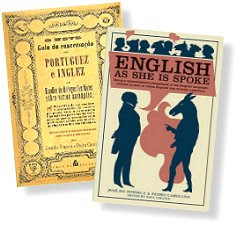
A doozy of a week saw me doing some heavy editing and finishing off a three-book review - finally! The latter left me so relaxed I didn't feel like doing more than the usual for the rest of the week. But I'm hoping things will pick up again.
I've been making toast. Toast bread. With lots of butter. Unsalted butter. Never use salted butter for toast. Salted butter tastes funny. An odd smell will manifest at the back of your throat, near the smell receptors. Does that happen to you? It does to me.
I bought salted butter by accident. For that brand, salted and unsalted butter has very similar packaging, except for a tiny word at the top. "No.1 in Singapore"? Who cares? And how can they tolerate that odd smell? I may have to throw out a whole block of good butter. I'm depressed. The butter is innocent...
...Correction: I bought only nine books at last week's big bad book event, still a modest haul. About half are non-fiction titles, an indication of where my interests lay.
- 10,001 Timesaving Ideas
Reader's Digest (2008)
447 pages
Non-fiction
ISBN: 978-192134415-2
Reader's Digest churns out some of the most amazing non-fiction titles. Although time and the Internet have lessened the need for these volumes, it's nice to have a handy guide to nearly everything under the sky that doesn't require electricity, electronic hardware and an Internet subscription. This title is just the thing. - The New York Times Guide to Essential Knowledge
A Desk Reference for the Curious Mind
St. Martin's Press (2007)
1320 pages
Non-fiction
ISBN: 978-0-312-37659-8
You'll feel like a good editor with one of these on your desk. Though it isn't incumbent on the editor to be an expert on everything, he should at least check up on facts, names, etc that look dodgy on a manuscript. A pity this edition is a bit out of date, but at RM20, this monster is worth it. - Vintage Singapore
Souvenirs from the Recent Past
Editions Didier Millet (2006)
191 pages
Non-fiction
ISBN: 978-981-4217-01-9
At least one other person agrees that there's something about the cover that screams, "Buy me!" No mean feat, considering that hundreds of other books in the venue were doing the same. A testament to Didier Millet's expertise in coffeetable books.
This one is, as the title suggests, is a museum display in a book of all old things in Singapore. That it invokes a sense of nostalgia for old things in Malaysia is no surprise. - The Book of the Dead
Lives of the Justly Famous and the Undeservedly Obscure
John Lloyd and John Mitchinson
Faber and Faber (2009)
435 pages
Non-fiction
ISBN: 978-0-571-24491-1
A witty, informative volume about some of the world's most famous and notorious personalities. Because you just need to know. ...Ah, George Psalmanazar! Greetings old friend. Haven't seen you since that Reader's Digest Amazing Facts book. - Word Fugitives
In Pursuit of Wanted Words
Barbara Wallraff
Collins (2006)
192 pages
Non-fiction
ISBN: 978-0-06-083273-5
The Internet age has, arguably, seen the coining of new words, some of which are amalgamations of and extrapolations from existing words. But not all of them have been corralled into a single, easy-to-reach source; ever tried looking up urbandictionary.com? Though not an exhaustive guide to (more like an exploration of) strange new words, lexophiles will love this slim little thing. - Little Hut of Leaping Fishes
Chiew-Siah Tei
Picador (2008)
389 pages
Fiction
ISBN: 978-0-330-42391-5
I had... no idea why this ended up in my bag. Probably leapt inside when I wasn't looking. Or perhaps I absentmindedly chucked it into my bag for no reason other than the price tag. A balmy Saturday afternoon is waiting for this novel. - Much Obliged, Jeeves
PG Wodehouse
Arrow Books (2008)
203 pages
Fiction
ISBN: 978-0-09-951396-4
One of two books by Wodehouse I managed to pick up at the sale. It's also, it seems, one of the only two books by Wodehouse on sale at the sale. - Pigs Have Wings
PG Wodehouse
Arrow Books (2008)
253 pages
Fiction
ISBN: 978-0-09-951398-8
This book was how I learned that Wodehouse had written other than the Jeeves series. Not sure if it's reputed to be just as witty and engaging. - The No.1 Ladies' Detective Agency
Alexander McCall Smith
Abacus (2008)
250 pages
Fiction
ISBN: 978-0-349-11675-4
I've been curious about this author for a while, but sadly, the first of McCall Smith's novels about Mma Ramotswe appears to be the only No.1 Ladies' Detective Agency novel on sale. Finished this one. It has a certain charm.
Also, some things have happened in the last week which I've been too distracted to write about. And a whole bunch of books to review, with several more candidates in the pipeline.
So, no Occupy Dataran Merdeka™ for me. Not when my own time is so Occupied™ already.
Categories:
Book Blab










